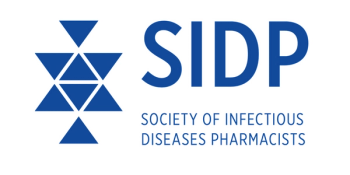
- Contagion, August 2023 (Vol. 08, No. 4)
- Volume 08
- Issue 4
We Are Neglecting Serious Health Threats
Viruses and other concerns within medicine are being overlooked; health care preparedness must address these potential crises.
After the COVID-19 pandemic, it is hard not to see the critical failures of response. Although things may appear simpler now that the world is past the acute stage of the pandemic, this is the most challenging and pivotal time for public health. A variety of infectious disease threats we could list would be pathogen specific and emphasize numerous vulnerabilities. Despite this, there are more complex, dynamic, and somewhat thorny issues we must address.
CYCLE OF NEGLECT
This is not a particularly novel concept but, given the challenges of ensuring sustained funding for public health and response, it is hard not to see this as a critical theme now. It has been 3.5 years since COVID-19 was identified; if we are being honest, attention and willingness to respond waned in 2022. This might have occurred earlier but the Omicron variant surge in late 2021 reminded us how quickly things can change. This boom and bust of funding for readiness, ironically, has become a constant in US preparedness and response.
Although it is not unique to the United States, this trend is something we are working to address nationally. In particular, preparedness is one aspect that so many of us working in health care have felt to be lacking. From the 2009 H1N1 outbreak to the Ebola virus in 2014 and then COVID-19 in 2020, there have been many examples of infectious disease threats that were felt within US hospitals, underscoring vulnerabilities and the disconnect between policy and practice. Abelson et al recently drew attention to this in relation to COVID-19, noting: “Days after 9/11, [the US] Congress awarded Washington Hospital Center millions of dollars to design a new emergency department that would treat mass casualties from a terrorist attack or infectious disease and serve as a model for hospitals across the country. Architects crafted plans for an 8-story, spacecraft-shaped, blast-proof emergency department they called ‘ER One.’ Experts drew up a 1000-page report on best practices for emergency operations, and the project secured an initial investment of about $30 million in federal and district funding. But then Congress lost interest.”1
Most hospitals and health care facilities have implemented some level of readiness, or at least awareness, given the pandemic—but larger, more systemic support and funding are necessary. Long-term care facilities and their vulnerability to health threats were highlighted during the pandemic; this has been a larger topic within the White House in terms of policy and funding. Many organizations have reiterated emphasis on health care response, infection prevention resources, and sustainable readiness for infectious disease events (eg, outbreaks, pandemics, special pathogens). The issue is whether this will become a part of our processes or something that fades with public interest. Time will determine our resolve in health care preparedness, and not just regarding an all-hazards approach—which is required of us—but also our capacity to build sustained readiness for the next infectious disease threat or event.
ANTIMICROBIAL RESISTANCE AND FUNGAL INFECTIONS
From Candida auris to the rise of resistant infections during the pandemic, we are only starting to face the realities of antimicrobial resistance (AMR). This is not a new threat or infectious disease crisis, though. I discussed this
C auris is challenging, from diagnostics to treatment modalities and resistance, as well as long-term isolation precautions that may be needed for patients unable to clear the infection. All these things require not only skilled medical teams, but also the tools to ensure diagnosis, awareness of the increased risk of infection for certain patient groups, and the capacity to manage long-term isolation if necessary. It is not just about making sure we diagnose and treat appropriately; we must have the systems and tools in place to do so. Is this something your health care facility has? Are there indicators of increased risk for certain patients that trigger screening? Is there effective testing capacity or is the facility reliant on external laboratories that might delay the process? All these things should be considered. When we discuss biopreparedness and readiness in health care, it is not just about a novel pathogen or high-containment disease like the Ebola virus, but also the response to challenging pathogens that stress our capacity and capabilities.
C auris is not the only increasing microbial threat. The CDC noted that resistant hospital-onset infections and deaths increased during the first year of the pandemic—up at least 15% from 2019 to 2020 among several diseases. Furthermore, the CDC noted, “Data from the National Healthcare Safety Network show significantly higher incidence in central line–associated bloodstream infections, catheter-associated urinary tract infections, ventilator-associated events, and methicillin-resistant Staphylococcus aureus [MRSA] bacteremia in 2021 compared [with] 2019.”4 Much research has gone into assessing the trend of AMR increases during COVID-19, noting worrisome rises in multidrug-resistant organisms like extended-spectrum β-lactamase–producing Klebsiella pneumoniae, carbapenem-resistant New Delhi metallo-β-lactamase–producing Enterobacterales, Acinetobacter baumannii, and MRSA.5 The truth is that we are only starting to see larger conversations around AMR again, as so much was focused on COVID-19 for so long. This issue was long neglected before the pandemic and will be afterward, but it must be a discussion now. A rise of infections resistant to treatments and requiring cumbersome infection prevention efforts (and diagnostics) stress existing systems, but what if we saw them during the next major outbreak or pandemic? AMR tests our capacities on the best days, but it serves as a canary in the coal mine for existing health care response infrastructure. Now more than ever, we need to tackle this issue and build resilience into our health care practices, utilizing AMR as a metric for success.
REAUTHORIZING POLICY AND MOVING FORWARD
There are myriad health issues that receive infrequent attention and resources—neglected tropical diseases, vaccine-preventable diseases, social and economic inequities affecting access to care, and the long-term implications of a pandemic for those who had COVID-19 and those who shared the stress and trauma. The previous examples I shared, though, reiterate the challenges of building robust health care systems from the bottom up. Health care biopreparedness is not simply about ensuring that a hospital is ready for a respiratory pandemic or a high-containment pathogen; it must be able to manage the daily microbial threats while investing in sustained readiness for the overwhelming ones. Sustainability is not just funding, though; it involves continued attention to and support for efforts that may not occur now but build a robust foundation. When we say, “from the ground up,” that is not just within a health care facility—it is also on a national level, which includes policy.
Consider the Pandemic and All-Hazards Preparedness Reauthorization Act (PAHPRA). Passed in 2013 by Congress, this law enhances national readiness by “authorizing funding for public health and medical preparedness programs, such as the Hospital Preparedness Program and the Public Health Emergency Preparedness Cooperative Agreement, amending the Public Health Service Act to grant state health departments greatly needed flexibility in dedicating staff resources to meeting critical community needs in a disaster, authorizing funding through 2018 for buying medical countermeasures under the Project BioShield Act, and increasing the flexibility of BioShield to support advanced research and development of potential medical countermeasures. PAHPRA also enhances the authority of the [FDA] to support rapid responses to public health emergencies.”6
Why is PAHPRA reauthorization discussed in an article about health care readiness? It is set to expire this year and there have been challenges in ensuring its reauthorization due to a need for bipartisan agreement. The American Hospital Association recently released a statement reiterating the importance of Congress reauthorizing this piece of legislation, emphasizing that it is part of a bigger picture when it comes to our capacity to prepare for and respond to infectious disease (among other) threats that affect public health.7 We have historically struggled with the ability to prioritize health care readiness and increase funding while ensuring sustained engagement and political support for these issues, especially health care readiness. As much as we would like to think a pandemic would have changed that, the truth is that we have reached a fork in the road—take the road previously journeyed, or perhaps the road less traveled, where we opt to prioritize readiness across all levels, from policy to health care and the front lines. Infectious diseases are not going away; they are becoming more frequent, more complex, and much more challenging.
References
1. Abelson J, Priest D, Sullivan J, Dungca N. Boom-and-bust federal funding after 9/11 undercut hospitals’ preparedness for pandemics. The Washington Post. May 2, 2020. Accessed June 26, 2023. https://www.washingtonpost.com/investigations/2020/05/02/hospital-preparedness-coronavirus-federal-funds/
2. Lai CC, Chen SY, Ko WC, Hsueh PR. Increased antimicrobial resistance during the COVID-19 pandemic. Int J Antimicrob Agents. 2021;57(4):106324. doi:10.1016/j.ijantimicag.2021.106324
3. Popescu S. Can I get a break from Candida auris? Contagion. Published online June 6, 2023. Accessed June 26, 2023. https://www.contagionlive.com/view/can-i-get-a-break-from-candida-auris-
4. COVID-19 impact on HAIs. CDC. Updated June 10, 2022. Accessed June 17, 2023. https://www.cdc.gov/hai/data/portal/covid-impact-hai.html.
5. Much research has gone into assessing the trend of AMR increases during COVID-19, noting worrisome rises in multidrug-resistant organisms like extended-spectrum β-lactamase–producing Klebsiella pneumoniae, carbapenem-resistant New Delhi metallo-β-lactamase–producing Enterobacterales, Acinetobacter baumannii, and MRSA
6. Pandemic and All-Hazards Preparedness Reauthorization Act (PAHPRA). Administration for Strategic Preparedness & Response. Accessed June 17, 2023. https://aspr.hhs.gov/legal/pahpa/Pages/pahpra.aspx
7. AHA comments on reauthorization of the Pandemic and All-Hazards Preparedness Act (PAHPA). March 29, 2023. Accessed June 12, 2023. https://www.aha.org/lettercomment/2023-03-29-aha-comments-reauthorization-pandemic-and-all-hazards-preparedness-act-pahpa
Articles in this issue
about 2 years ago
Ruptured Echinococcal Pulmonary Cystabout 2 years ago
Guess Who’s Back Again? Malariaabout 2 years ago
Starting an Inpatient Penicillin Skin Testing Service in 2023Newsletter
Stay ahead of emerging infectious disease threats with expert insights and breaking research. Subscribe now to get updates delivered straight to your inbox.






























































































































































































































































































